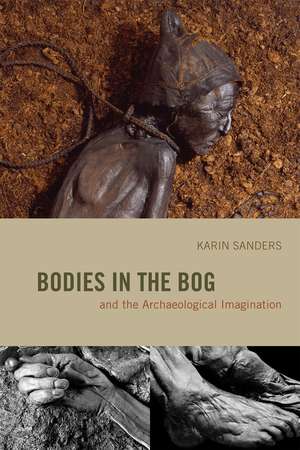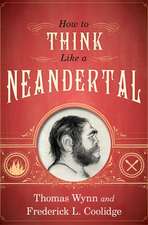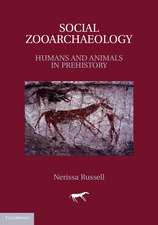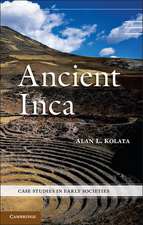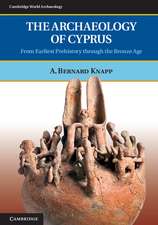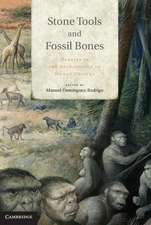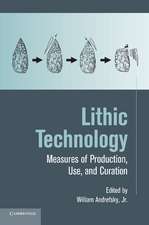Bodies in the Bog and the Archaeological Imagination
Autor Karin Sandersen Limba Engleză Paperback – 6 sep 2012
Over the past few centuries, northern Europe’s bogs have yielded mummified men, women, and children who were deposited there as sacrifices in the early Iron Age and kept startlingly intact by the chemical properties of peat. In this remarkable account of their modern afterlives, Karin Sanders argues that the discovery of bog bodies began an extraordinary—and ongoing—cultural journey.
Throughout the nineteenth and twentieth centuries, Sanders shows, these eerily preserved remains came alive in art and science as material metaphors for such concepts as trauma, nostalgia, and identity. Sigmund Freud, Joseph Beuys, Seamus Heaney, and other major figures have used them to reconsider fundamental philosophical, literary, aesthetic, and scientific concerns. Exploring this intellectual spectrum, Sanders contends that the power of bog bodies to provoke such a wide range of responses is rooted in their unique status as both archeological artifacts and human beings. They emerge as corporeal time capsules that transcend archaeology to challenge our assumptions about what we can know about the past. By restoring them to the roster of cultural phenomena that force us to confront our ethical and aesthetic boundaries, Bodies in the Bog excavates anew the question of what it means to be human.
Preț: 200.74 lei
Nou
Puncte Express: 301
Preț estimativ în valută:
38.42€ • 39.88$ • 32.03£
38.42€ • 39.88$ • 32.03£
Carte disponibilă
Livrare economică 03-17 martie
Livrare express 14-20 februarie pentru 27.44 lei
Preluare comenzi: 021 569.72.76
Specificații
ISBN-13: 9780226734057
ISBN-10: 0226734056
Pagini: 344
Ilustrații: 63 halftones
Dimensiuni: 152 x 229 x 23 mm
Greutate: 0.45 kg
Editura: University of Chicago Press
Colecția University of Chicago Press
ISBN-10: 0226734056
Pagini: 344
Ilustrații: 63 halftones
Dimensiuni: 152 x 229 x 23 mm
Greutate: 0.45 kg
Editura: University of Chicago Press
Colecția University of Chicago Press
Notă biografică
Karin Sanders is professor of Scandinavian studies at the University of California, Berkeley.
Cuprins
List of Illustrations
Preface and Acknowledgements
Introduction
Remarkable Remains
Chapter 1
Nature’s Own Darkroom
Chapter 2
The Archaeological Uncanny
Chapter 3
Uses and Abuses: Bog Body Politics
Chapter 4
Erotic Digging
Chapter 5
Bog Body Art
Chapter 6
Museum Thresholds and the Ethics of Display
Chapter 7
Making Faces
Postscript
Frozen Time and Material Metaphors
Notes
Bibliography
Index
Preface and Acknowledgements
Introduction
Remarkable Remains
Chapter 1
Nature’s Own Darkroom
Chapter 2
The Archaeological Uncanny
Chapter 3
Uses and Abuses: Bog Body Politics
Chapter 4
Erotic Digging
Chapter 5
Bog Body Art
Chapter 6
Museum Thresholds and the Ethics of Display
Chapter 7
Making Faces
Postscript
Frozen Time and Material Metaphors
Notes
Bibliography
Index
Recenzii
“A rare conjunction of brilliant research with lyrical feeling. At once gripping, enlightening, and deeply moving, this stunning book offers a mind-boggling trek across space and time, life and death, torment and ecstasy. By turns ventriloquist and taxidermist, Karin Sanders resurrects bog beings from the limbo of their burial. They are reborn through the curious eyes and creative hands of poets and painters, sculptors and scholars, as both saints and ghosts—like saints miraculously indestructible, like ghosts haunting us with eerie memories. And her fabulous bog bodies at length mirror ourselves. They are our own doppelgängers, doubles displaced from time immemorial.”
“What a wonderful, wonderful book this is. I absolutely loved Bodies in the Bog and everything about it, from the thoughtful approach and beautiful writing to the well-contextualized discussions of bog bodies in psychology, poetry, art, museum display, and facial reconstruction. A truly interdisciplinary study clearly based on years of passionate research, it offers a rich and nuanced explanation of what makes these bodies so fascinating, appealing, and troubling.”
“For me, archaeology has its muses; in Karin Sanders’s hands, these muses are very much with us, for she understands archaeology in relation to the literature, the poetry, the historical trajectories of each and every find. In her study of bog people, Sanders has brought together many voices that are not usually in conversation, presenting a dramatically new set of interlocking perspectives—a new kaleidoscopic pattern. This book is a delight to read, a skillful and ingenious accomplishment, a dexterous weaving of new ideas about a much-debated phenomenon that has long sparked our imaginations. What Sanders has done here makes me rejoice in what a creative mind can do, and in how readers will inevitably come away with all sorts of new understandings. Brava!”
"I found this book a joy to read because, unlike most archaeological studies, it combines scholarship with superb literary style, the whole salted by the provision of numerous imaginative pathways. I, for one, will never study or write about bog bodies in the same way again and I will try to ensure that the same is true of my students. Despite the few caveats mentioned above, it is a work of true originality that lifts bog victims out of their purely archaeological dimension and travels with them on a journey towards enlightenment. Early on in the study, the author speaks of bog bodies being embalmed with words. That is nowhere more true than in this book."
"[Sanders] deftly teases out the paradoxes: born of neither land nor water but something in between: the bodies are the uncanny link between the pagan belief that prompted their death and our own prejudices. . . . Equally entertaining is Sanders' commentary on Freud and Jung, describing how the famous schism between the two psychologists was prompted by their disagreement over the meaning of the bog bodies."—Philip Hoare, Sunday Telegraph
"Sanders has uncovered a fascinated range of examples of literature and art which has responded to the peaty mummies. . . . Sanders's reading, research and reflection has resulted in a rich and suggestive study."—Jennifer Wallace, Times Literary Supplement
